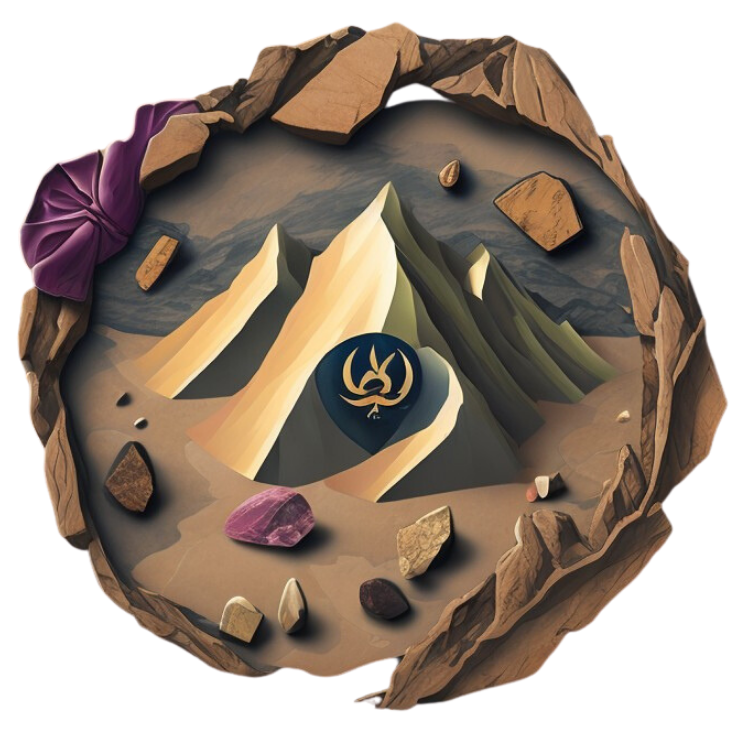Gemology
What is Gemology?
Gemology is the science of studying, identifying, and evaluating gemstones. It involves understanding the properties of gemstones, such as their chemical composition, crystal structure, optical properties, and physical characteristics like hardness and durability.
Gemology is crucial for gemstone identification and grading, helping to distinguish between natural and synthetic gems, as well as detecting treatments that may have been applied to enhance a gemstone's appearance. Gemologists use a variety of tools and techniques to examine gemstones, from simple loupes and microscopes to more advanced spectrometers and refractometers.
This page provides an in-depth introduction to gemology, exploring the various facets of this fascinating field, including gemstone identification, grading, cutting, synthetic gems, and ethical considerations in the gem trade.
Gemstone Identification
Gemstone identification is a core aspect of gemology, involving the determination of a gemstone's species, variety, and origin. Identification methods include examining the gemstone's physical and optical properties, such as color, clarity, refractive index, and specific gravity.
In addition to traditional methods, advanced techniques like spectroscopy and microscopy are used to identify gemstones and detect treatments. Accurate identification is essential for gem valuation, ensuring that buyers and sellers have a clear understanding of the gemstone's characteristics.
Explore this section to learn about the tools and techniques used in gemstone identification, the common characteristics of various gemstones, and tips for distinguishing between natural and synthetic stones.
Gemstone Grading
Gemstone grading is the process of evaluating a gemstone's quality based on criteria such as color, clarity, cut, and carat weight. This process helps determine the value of a gemstone in the market and is essential for both buyers and sellers.
The most commonly graded gemstones are diamonds, rubies, sapphires, and emeralds, each with its own set of grading standards. Gemologists use a combination of visual assessment and measurement tools to assign grades that reflect the gemstone's overall quality.
In this section, you will explore the grading standards for different gemstones, the factors that influence a gemstone's grade, and how grading affects the value and desirability of a gemstone.
Gemstone Cutting
Gemstone cutting, or lapidary, is the art of transforming rough gemstones into beautifully shaped and polished stones ready for use in jewelry or decorative items. The cut of a gemstone can dramatically affect its appearance, enhancing its brilliance and color.
There are various cutting styles, including faceting, cabochon cutting, and carving, each suited to different types of gemstones and desired effects. The quality of the cut is crucial for maximizing the gemstone's optical properties and overall aesthetic appeal.
Explore this section to learn about the different gemstone cutting techniques, the tools used in lapidary work, and tips for achieving the best results with various types of gemstones.
Synthetic Gems
Synthetic gems are man-made stones that have the same chemical composition, crystal structure, and physical properties as natural gemstones. They are created through processes that replicate the conditions under which natural gemstones form, often resulting in stones that are virtually indistinguishable from their natural counterparts.
While synthetic gems offer an affordable alternative to natural stones, their value and appeal can vary depending on factors such as rarity, quality, and market demand. Understanding the differences between natural and synthetic gems is essential for gemologists, jewelers, and consumers alike.
In this section, you will explore the methods used to create synthetic gems, the differences between natural and synthetic stones, and the ethical considerations involved in the production and sale of synthetic gems.
Gemstone Trading
Gemstone trading involves the buying, selling, and exchanging of gemstones, either as raw materials or finished products. This trade is a global industry with complex supply chains that connect miners, traders, cutters, and jewelers across the world.
Successful gemstone trading requires a deep understanding of the market, including the valuation of gemstones, trends in demand, and the ethical considerations surrounding sourcing and sales. Traders must be knowledgeable about the origin, treatment, and authenticity of the stones they deal with to ensure transparency and build trust with buyers.
In this section, explore the dynamics of gemstone trading, from market practices and valuation techniques to ethical sourcing and the impact of global trade on local communities. Learn how to navigate the gemstone market and make informed decisions whether you are buying, selling, or investing in gemstones.
